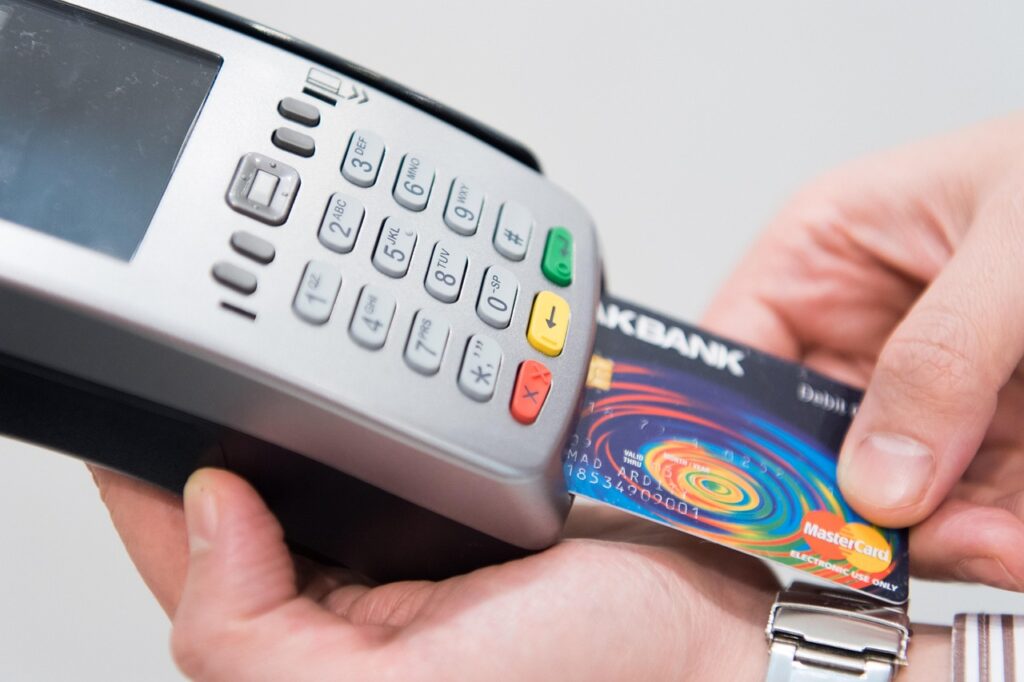The global payments landscape has undergone a revolutionary transformation over the past decade, with contactless payment technology emerging as the dominant force reshaping how consumers and businesses conduct transactions. What began as a novel convenience has rapidly evolved into an essential infrastructure component, accelerating particularly during the COVID-19 pandemic when hygiene concerns amplified demand for touch-free payment solutions. This technological shift represents more than just an upgrade in payment methods—it signifies a fundamental change in consumer behavior, merchant operations, and the broader financial ecosystem.
Current market data reveals the unprecedented scale of this transformation. Contactless payment volumes have grown exponentially, with tap-to-pay transactions increasing by over 150% in many developed markets since 2020. The technology encompasses various solutions including Near Field Communication (NFC) cards, mobile wallets, wearable devices, and emerging biometric authentication systems. Major financial institutions report that contactless transactions now represent the majority of card-present payments in numerous regions, indicating a permanent shift rather than a temporary pandemic-driven trend.
The implications extend far beyond simple transaction processing. Contactless technology has become a catalyst for broader digital transformation initiatives across industries, enabling new business models, enhancing customer experiences, and creating opportunities for data-driven insights. Merchants are discovering that contactless capabilities not only improve operational efficiency but also contribute to increased customer satisfaction and loyalty. Meanwhile, financial service providers are leveraging this technology to develop innovative products and services that meet evolving consumer expectations.
The acceleration of contactless adoption has also highlighted critical considerations around security, privacy, and financial inclusion. While the technology offers enhanced convenience and speed, it raises important questions about data protection, transaction monitoring, and ensuring equitable access across diverse populations. Understanding these dynamics is crucial for stakeholders navigating the evolving payments ecosystem and developing strategies that balance innovation with responsibility.
Background & Historical Analysis
The journey toward contactless payment technology began in the early 2000s, rooted in radio frequency identification (RFID) technology that had been used for access control and inventory management. The first commercial contactless payment cards were introduced in South Korea and the United Kingdom around 2003, utilizing 13.56 MHz frequency bands to enable short-range communication between cards and payment terminals. These early implementations featured modest transaction limits and basic security protocols, serving primarily as proof-of-concept rather than comprehensive payment solutions.
The period from 2005 to 2010 marked a crucial development phase as financial institutions and technology companies refined the underlying infrastructure. Near Field Communication (NFC) standards emerged as the preferred protocol, offering enhanced security features and broader compatibility across devices and payment systems. Major card networks including Visa, Mastercard, and American Express began extensive pilot programs, testing various implementation approaches and consumer acceptance levels. During this era, transaction limits remained conservative, typically capped at $25-30 to minimize fraud exposure while building consumer confidence.
The smartphone revolution fundamentally altered the contactless payment trajectory. Apple’s introduction of Apple Pay in 2014, followed by Google Pay and Samsung Pay, demonstrated that mobile devices could serve as secure payment instruments using existing NFC infrastructure. These platforms incorporated advanced security features including tokenization, biometric authentication, and device-specific encryption, addressing many concerns that had limited earlier adoption. The integration of payment capabilities into ubiquitous devices like smartphones created new usage scenarios and expanded the potential user base significantly.
European markets emerged as early leaders in contactless adoption, driven by regulatory support, coordinated infrastructure investments, and consumer openness to new payment methods. The United Kingdom, in particular, became a testing ground for higher transaction limits and broader merchant acceptance, with Transport for London’s adoption of contactless payments for public transit serving as a significant catalyst. By 2018, contactless payments represented over 60% of card transactions in the UK, demonstrating the technology’s potential for mainstream adoption.
The Asia-Pacific region presented a different adoption pattern, with markets like China leaping directly to QR code-based mobile payments through platforms like Alipay and WeChat Pay, while simultaneously developing NFC infrastructure. This parallel development created diverse regional ecosystems, each optimized for local preferences and technological capabilities. Japan’s preparation for the 2020 Olympics accelerated contactless infrastructure development, though the pandemic ultimately transformed the timeline and priorities for implementation.
In North America, adoption progressed more gradually, influenced by existing magnetic stripe infrastructure and consumer payment habits. However, the liability shift for chip cards in 2015 coincided with increased merchant investment in contactless-capable terminals. The pandemic served as an unexpected accelerator, with many merchants enabling previously dormant contactless features and consumers rapidly adopting touch-free payment methods for health and safety reasons.
Expert Analysis & Current Implications
Industry analysts consistently emphasize that the current contactless payment boom represents a permanent structural shift rather than a temporary response to pandemic conditions. Research from leading consulting firms indicates that consumer preferences established during 2020-2021 have solidified into long-term behavioral changes, with over 70% of new contactless users planning to continue these payment methods indefinitely. This permanence is attributed to the inherent advantages that extend beyond health considerations, including transaction speed, convenience, and enhanced security features.
Security architecture has evolved significantly to address both perceived and actual risks associated with contactless transactions. Modern implementations utilize dynamic authentication, generating unique transaction codes for each payment to prevent replay attacks. Tokenization technology ensures that actual card numbers are never transmitted or stored by merchants, while biometric authentication on mobile devices adds an additional security layer for higher-value transactions. These advancements have resulted in fraud rates for contactless transactions that are comparable to or lower than traditional card-present transactions.
The merchant perspective reveals complex considerations around contactless adoption. While the technology reduces transaction processing time and can improve throughput during peak periods, implementation requires careful integration with existing point-of-sale systems and staff training. Small and medium-sized enterprises often face challenges related to terminal costs and technical complexity, though declining hardware prices and improved software interfaces are addressing these barriers. Merchant interviews indicate that contactless capability has become a competitive differentiator, particularly in retail segments where customer experience is paramount.
Data analytics capabilities represent an often-overlooked dimension of contactless payment systems. The digital nature of these transactions generates rich datasets that can inform business intelligence, fraud detection, and customer relationship management initiatives. Financial institutions are developing sophisticated algorithms to analyze spending patterns, predict customer needs, and customize product offerings. However, this data richness also raises privacy concerns and regulatory compliance requirements that organizations must carefully navigate.
Financial inclusion implications of contactless technology present both opportunities and challenges. While smartphone-based solutions can potentially provide payment access to underbanked populations, they also require device ownership and technical literacy that may exclude certain demographic segments. Prepaid contactless cards offer an alternative pathway, but distribution and customer support infrastructure remain significant considerations. Industry experts emphasize the importance of designing inclusive solutions that accommodate diverse user needs and capabilities.
Cross-border payment scenarios highlight both the potential and limitations of current contactless systems. While NFC standards provide technical interoperability, currency conversion, fees, and regulatory differences create complexity for international travelers and merchants. Industry initiatives are working toward more seamless cross-border experiences, but achieving true global interoperability requires ongoing coordination among multiple stakeholders including card networks, financial institutions, and regulatory bodies.
The competitive landscape has intensified as traditional financial institutions compete with technology companies, fintech startups, and even retail giants for payment market share. This competition has accelerated innovation cycles and reduced costs for consumers and merchants, but has also created fragmentation in some markets where multiple incompatible systems compete for adoption. Experts suggest that market consolidation around common standards and interoperable platforms will be essential for sustainable long-term growth.
Future Outlook & Strategic Recommendations
The trajectory for contactless payment technology points toward continued expansion and sophistication, with emerging trends suggesting significant evolution beyond current implementations. Industry forecasts project that contactless transactions will represent over 50% of all card payments globally by 2027, driven by ongoing consumer preference shifts and continued merchant infrastructure investments. However, this growth will likely be accompanied by fundamental changes in technology architecture, user interfaces, and value-added services that extend well beyond simple payment processing.
Biometric authentication represents the next frontier for contactless payments, with facial recognition, fingerprint scanning, and even palm recognition potentially replacing traditional card or device-based interactions. Amazon’s deployment of palm-scanning payment systems in retail locations demonstrates the commercial viability of these approaches, though widespread adoption will depend on consumer acceptance and privacy framework development. These technologies promise enhanced security and convenience while creating new possibilities for personalized shopping experiences and loyalty program integration.
Internet of Things (IoT) integration will expand contactless payment capabilities to new contexts and devices. Connected vehicles, smart home systems, and wearable devices beyond traditional smartwatches could become payment endpoints, enabling seamless transactions in previously unreachable scenarios. The automotive industry is particularly focused on in-vehicle payment systems for parking, fuel, and drive-through purchases, potentially transforming how consumers interact with transportation-related services.
Central Bank Digital Currencies (CBDCs) under development in numerous



